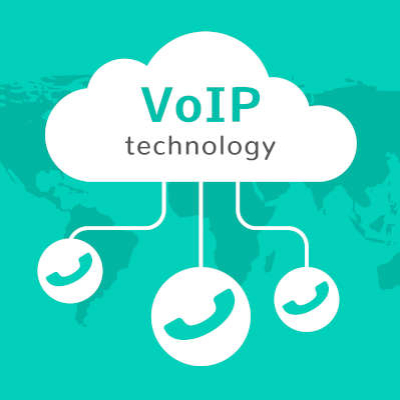There is no question that a small business can benefit from technology, as has been proven time and time again. However, an issue can arise if a business bites off more than it can chew, so to speak, and ultimately creates a spike in costs. A responsible business owner will resist this temptation and prioritize the solutions they need over the ones they want – building profitability and generating capital needed to make other improvements. In this blog, we’ll examine some of the implementations that can deliver a good return on investment to a small business.
The Internet was always envisioned to be a network capable of sharing information across the globe—hence, the term “world wide web.” However, many online services are currently at odds with governing bodies, many business tactics and decisions impacted or even prohibited as a result. Let’s examine some of these tactics, and how the Internet has been impacted.
For any business endeavor, productivity has to be at the very top of the hierarchy of metrics. Think about it, it doesn’t matter what field you work in or what market you cater to, if your business isn’t productive it is going to have a hard time being profitable. For almost a year, many businesses have relied on remote workers due to the COVID-19 pandemic, and regardless of what you think about remote work, metrics have shown a fairly surprising rate of productivity out of remote workers over this time. With 12 months of data in hand, we take a look at why productivity is still a king of metrics and how the ongoing pandemic has affected the workforce’s productivity.
If there was anything for businesses to learn in the past year, it had to be the importance of operational flexibility—after all, a raging pandemic tends to keep people out of the office. Now, with multiple vaccines in production, it seems apparent that these restrictions will soon be eased… but will any of the changes in business operations remain, even after they are necessary?
Businesses of all shapes and sizes rely on the telephone to support their operations, which has historically required no small investment on their part. Today, however, there is a much more cost-effective option in Voice over Internet Protocol (also known as VoIP). Let’s consider a few reasons that businesses should see VoIP as the superior option.
Have you heard of the Gig Economy? Basically, it is the name for the millions of people that work individual jobs without having a static employer. The COVID-19 pandemic has removed some of the luster from gig work as companies look to cut back where they can. Let’s take a look at the new gig economy, and how it functions during a pandemic.
Regardless of what your business does, there is a good chance that it relies pretty heavily on technology. When that technology falters, so does your business. Sure, this might be for a couple hours at a time, but it all adds up and has a major impact on the success of your business. Many organizations have outsourced their IT support and management, but could benefit from a more proactive approach than the one they currently employ. Today, we will take a look at some of the priorities that businesses should consider when choosing an outsourced IT provider. Proactive Management One of the most crucial elements of a good managed IT services platform is the proactive approach to management. This is due to the fact that by mitigating downtime, an organization will be able to function more efficiently. When we talk about proactive management, we are mainly talking about constant remote monitoring of a network and infrastructure. While some outsourcers will just remotely fix problems that an organization reports, a managed IT services provider will continually monitor the network and infrastructure and use automation to ensure that all of a business’ IT is running smoothly. The whole strategy is to keep downtime to a minimum through conscientious care of the hardware and network using cutting-edge tools designed to automate many of the countless tasks that are needed to do so. The best outsourced IT services will absolutely include proactive monitoring. Backup and Disaster Recovery Sometimes when a business outsources their IT support, they are left to find their own backup system. This can create unnecessary costs, as most managed IT service providers (MSPs) make a point to mention that their backup and disaster recovery platform is central to their offering; and why not? Controlling your data is effectively having control over one of your business’ best assets. A well-functioning BDR should have the ability to backup all assigned data systems incrementally. That way the backup gets as much of your work saved as possible, protecting your business from data loss brought on by any issue, including ransomware, natural disaster, or simple user error. Security Consulting The traditional outsourced IT or break/fix vendor would never consider proactively helping a business avoid the litany of security threats that are out there today. Their business model suggests as much. With an MSP, however, your network’s security is paramount to their ability to be profitable. How’s that? The more problems you have with your network and infrastructure the more time and effort they need to take to ensure your IT is running as promised. As a result, for the MSP to succeed, your business needs to succeed. The IT technicians that work in managed IT services are typically some of the most proficient technicians in your area. They can lend a great deal of knowledge and expertise to keep your business technology assets secure and running as intended. This includes security for your network and infrastructure, your mobile strategies, and even your cloud infrastructure and resources. Patch Management Another proactive measure that a good MSP will deliver is patch management. Most of your supported software continuously releases patches to keep it from being a pathway for infiltration from nefarious outside entities. A good IT services provider will ensure that your software is not only monitored, […]
Choosing what technology to invest in can be some of the most important decisions you are going to make for your business. Every business has a technology wish list. Some of those wishes are just based in simple practicality, while others are more geared toward the future. Regardless of how you think about your business’ next technology purchase, you are going to need a plan. Today, we’ll discuss how to approach your business’ IT strategy.
With the pandemic stretching on for so long, there are a lot of workplaces figuring out ways to reopen and resume operations. Due to today’s technology providing the option for some, many managers and business owners have elected to keep the office shut down and shift to remote operations. Technology is also assisting those who are going back into the workplace. Let’s examine some of the technology that is being used to accomplish workplace processes, in all the different ways it can.









